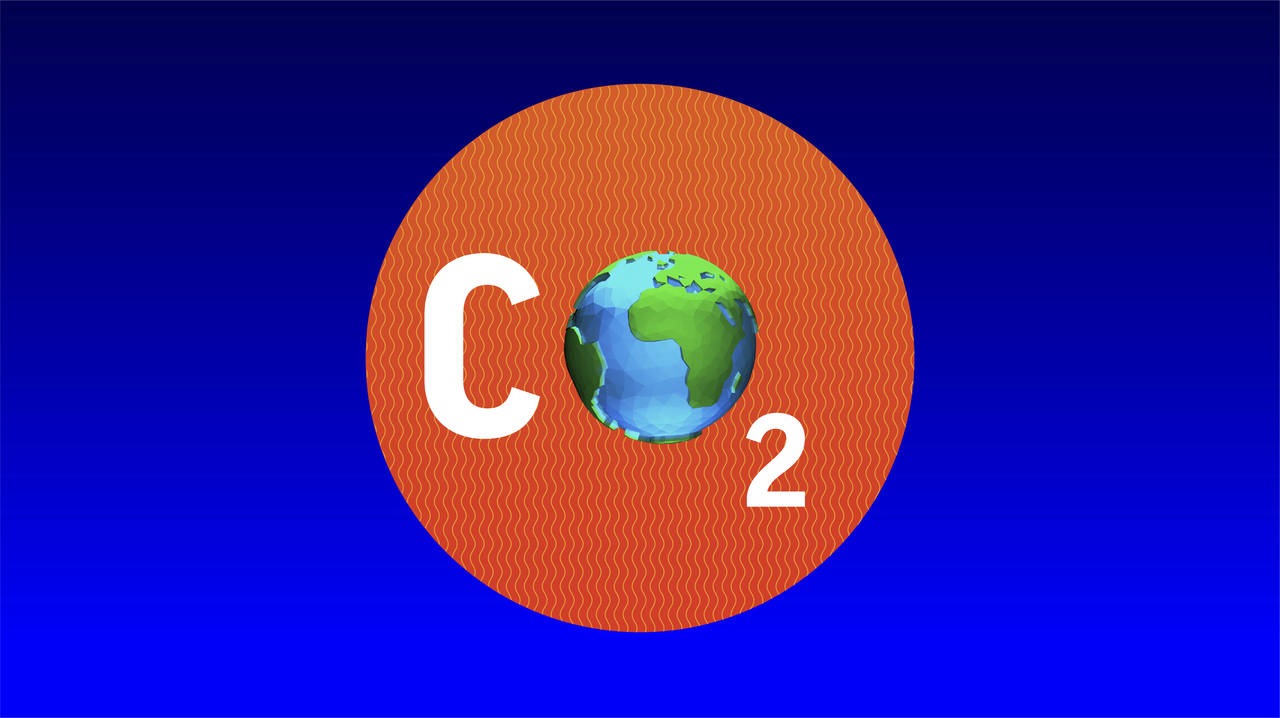Climate Questions: How does carbon dioxide trap heat?
Oct 20, 2022, 4:59 PM | Updated: Oct 21, 2022, 5:01 am

How does carbon dioxide trap heat? (AP Illustration/Peter Hamlin)
(AP Illustration/Peter Hamlin)
That carbon dioxide and other greenhouse gases trap heat is something scientists have known about for more than a 150 years. The underlying concept behind climate change is simple enough that school children can replicate the chemistry and physics and so can you.
The why and how it happens is only a bit more complicated.
___
EDITOR’S NOTE: This story is part of an ongoing series answering some of the most fundamental questions around climate change, the science behind it, the effects of a warming planet and how the world is addressing it.
___
Just as a greenhouse traps heat or a blanket keeps you warm, carbon dioxide, methane and other gases — nicknamed greenhouse gases — trap heat from the sun that would otherwise bounce back into space. The blanket or greenhouse aren’t perfect analogies but they give the right sense of what is happening, said University of Pennsylvania climate scientist Michael Mann.
Without the greenhouse effect, Earth would be freezing, scientists said. The greenhouse effect, which is natural but then put on steroids by carbon pollution, is responsible for conditions that make life on Earth possible.
But there can be too much of a good thing. Scientists point to the runaway greenhouse effect on Venus as a case example. In fact, former top NASA climate scientist James Hansen, often called the Godfather of global warming, initially was studying what was happening on Venus before he turned to his home planet and accurately warned people about a smaller scale version happening here.
Heat from the sun comes through the atmosphere and then bounces back as infrared radiation, a different wavelength than it came in on. If you put your hand over a dark rock on a warm sunny day you may be able to feel that heat heading off Earth. The greenhouse effect is when that heat tries to escape Earth, but some of it is trapped by different chemicals in the atmosphere, such as water vapor, carbon dioxide and methane.
In the 1820s, French mathematician and scientist Joseph Fourier figured that something keeps Earth warmer than a bare rock out in space: Our atmosphere.
“Our atmosphere, thrown as a barrier across the terrestrial rays, produces a local heightening of the temperature at the Earth’s surface,” Irish physicist John Tyndall said in 1862, identifying water vapor and carbon dioxide as natural greenhouse gases trapping heat. Then in 1896, Swedish chemist Svante Arrhenius took it one step further and calculated that changes in carbon dioxide may affect the climate.
Many classroom and even home kitchen experiments can show this with two plastic soda bottles, some carbon dioxide, air, a strong light bulb or flame and a thermometer. Heat up a bottle with regular air and one filled with carbon dioxide in similar ways, take their temperatures and after a while the carbon dioxide filled one should warm noticeably more.
That’s because of the geometry, spin and vibration of carbon molecules block the specific infrared wavelength of light that’s trying to escape Earth, Mann said. It’s a different wavelength than the light heading into the sun.
Greenhouse gases, especially carbon dioxide, “correspond to sort of holes” in the light spectrum that would otherwise allow heat to escape, but they block the exits, Mann said.
But if there are natural greenhouse gases why do small changes in carbon dioxide levels matter?
Earth’s carbon dioxide levels are about 420 parts per million, compared to 280 before the industrial revolution and the Earth has warmed about 2 degrees (1.1 degrees Celsius) in that time. Mann suggests another home experiment. Take a clear bowl of water. Put a few drops, say 0.4% of the water, of black ink in it.
“And the water turns black now,” Mann said. “Certain chemicals can have a very potent impact in very low concentrations. It’s true of cyanide. That’s why we avoid cyanide in even lower concentrations than that. And the ink experiment really drives how much of an influence a small number of very potent molecules can have… And that’s what’s going on here.”
___
Follow AP’s climate and environment coverage at https://apnews.com/hub/climate-and-environment
___
Follow Seth Borenstein on Twitter at @borenbears
___
Associated Press climate and environmental coverage receives support from several private foundations. See more about AP’s climate initiative here. The AP is solely responsible for all content.
Copyright © The Associated Press. All rights reserved. This material may not be published, broadcast, rewritten or redistributed.












